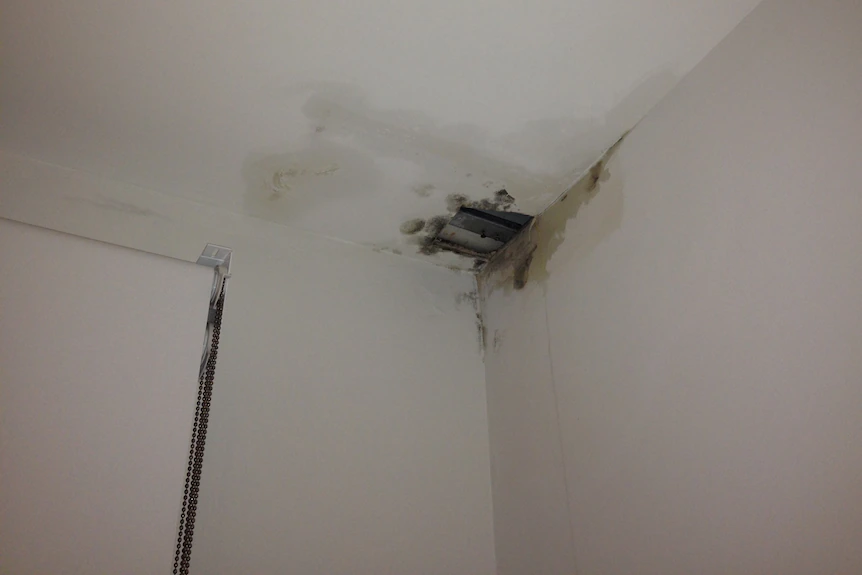- Home
- About
About
Who is Resilience Insurance and our commitment to corporate social responsibility.
- Latent Defects Insurance
Latent Defects Insurance
Providing a quality stamp on the design and construction of your asset.
- Case StudiesA development located in Caulfield South, Victoria, constructed by Shangri-La Constructions and completed in 2015, has attracted significant media attention recently. It has shed light...The Charles de Gaulle Airport in Paris suffered a catastrophic collapse in 2004. The incident occurred when a section of steel roofing at Terminal 2E...
- Industries
Industries
Infrastructure Projects
Lorem ipsum dolor sit amet, id quo facer saepe, te has alii quas, ad pri.
- Media
- Contact
Frequently Asked Questions
Have questions about Latent Defects Insurance? Look no further!
At the moment, there is no mandatory cover provided for Latent Defects apart from the statutory liability that is owed to the property owner by the developer/builder. Currently if a dispute arises between owner and developer/builder it normally results in the employment of many solicitors, at great additional cost, to make good repairs. It involves triggering the professional indemnity insurance of everyone involved with the build – multiple defence solicitors. Even then payments may not be enough to fix the inherent problems should you win your court case. Latent Defects Insurance allows the owner to lodge the claim directly with the insurer, without the need of any middle solicitors to facilitate a claim. Easier, cheaper, and hardly any angst. The insurer will then recover damages directly from those at fault.
LDI can only be applied for before construction starts. This allows Resilience’s Technical Inspection Report (TIS) to be in place in time. We recommend you start the application process earlier as it is a very complicated insurance product that takes considerable underwriting hours to complete and a substantial amount of information is requested on the build. The bigger the build, the more time it will take, so please give yourselves and Resilience the time that is needed and start early.
LDI is generally purchased by the Developer or Builder before construction commences. LDI is purchased at the time of building completion, enabling the insurer to be involved in quality design and building performance, assuring the ultimate product delivered is what was sold. The benefit of the protection provided by the policy is transferred to the respective owners at completion and is further transferred to subsequent owners throughout the 10-year period of insurance.
A key component of the TIS is a review of the design of a building. This review allows any potential flaws to be highlighted before construction commences and allows for a framework where these can be altered to increase overall building quality and design confidence. Due to this Latent Defects Insurance must be purchased prior to building work commencing and as the policy is active from completion, must be paid in full before this point.
Normally Resilience Insurance will insure new works only. On occasion, depending upon the size of, and the nature of the works we may look at works to existing buildings. Resilience has minimum premiums which may make an application expense. The Policy Wording and coverage is centred around Structural Works and the Envelope only, so therefore all internal works or internal upgrades will not be covered.
In NSW, there are two options for owners of property within residential apartment buildings, either latent Defects Insurance or the 2% strata building bond. In all other states and territories there is one option (outside of lengthy and costly litigation), Latent Defects Insurance.
The strata building bond paid for, by the developer at completion and the cost of the Bond comes out of the sale price of each unit – that is, the cost of the Strata Bond (including its administration) is added to the ultimate sale price owners pay. That amounts to somewhere between 2.2% and 2.5% of the cost of construction. It provides limited protection, as it is limited to two years and for a maximum benefit of 2% of the cost of construction. When/if that is exhausted, consumers necessarily revert to the historic litigation model which will take years of time and tens or hundreds of thousands of dollars to reach an outcome.
Latent Defects Insurance conversely has significant risk mitigation mechanisms built into the ‘pre-construction’ phase where those events that have historically given rise to claims are managed through construction. Coupled with the key benefit of avoiding litigation, and a cost averaging 1.55% of construction, living for ten years after construction and with an indemnity of building value or $50 million, the comparison shows the significant benefit from a cost perspective of LDI.
Resilience Insurance do not provide LDI to every developer or builder and will not issue cover on every building. We offer the product selectively to those developers and builders that we determine as trustworthy and with sufficient credentials and experience to deliver quality buildings to a standard expected by consumers.
Our underwriting process is rigorous and the risk processes we apply all the way through construction are developed to ensure that those events that lead to significant cost and negative emotional investment of consumers is reduced or removed.
Mandatory on every building project where LDI is offered is the Technical Inspection Service (TIS). The TIS is an independent survey of key design and construction phases and processes, monitoring and auditing the quality of design and construction through the entirety of the build. This changes the game. With independent auditors reviewing all elements all the way through the project and requiring full rectification of any potential issues as the construction is occurring but before completion, there is now significantly greater confidence owners have in taking occupancy of a property. They can be much more certain that they have settled on an asset, delivered as promised and required.
- Failure of rain screen allowing water to penetrate the envelope.
- Poorly fitting windows allowing water to penetrate the envelope.
- Defective roofing allowing water to penetrate the envelope.
- Defective cladding allowing water to penetrate the envelope.
- Ground subsidence causing damage to walls.
- Wind posts omitted allowing damage to walls.
- Defective designed floor slabs allowing movement and damage to floors/walls.
- Defective design and/or building techniques for sufficient reinforced iron used in the structure, allowing movement in the structure.
- Not tested and/or low quality of concrete used in the structure allowing for concrete cancer, cracks or damage to the structure.
Get In Touch
Get covered with Latent Defects Insurance from Resilience Insurance
Resilience Insurance is the market leader and primary resource for Latent Defects Insurance in Australia. Changing the game for consumers and Industry, this solution not only improves Building Confidence, but it is also a must have on any new development project.
Contact us
Phone: 1300 073 745
ABN: 63 651 449 482
AFSL: 240867



